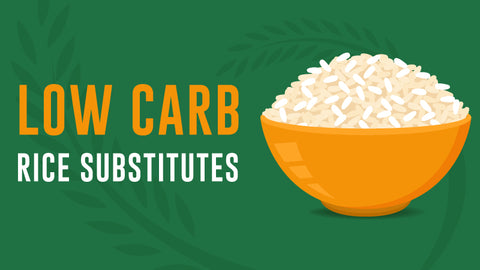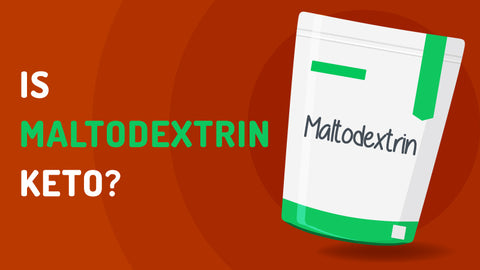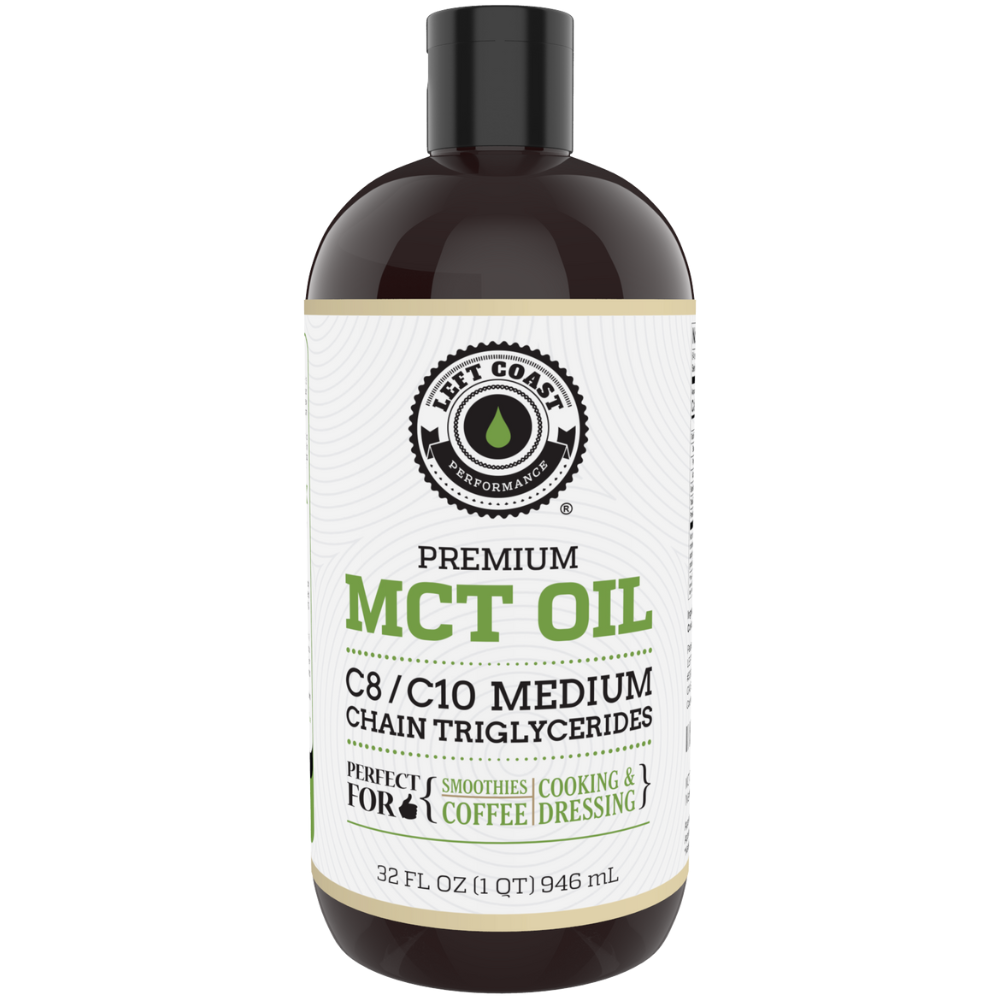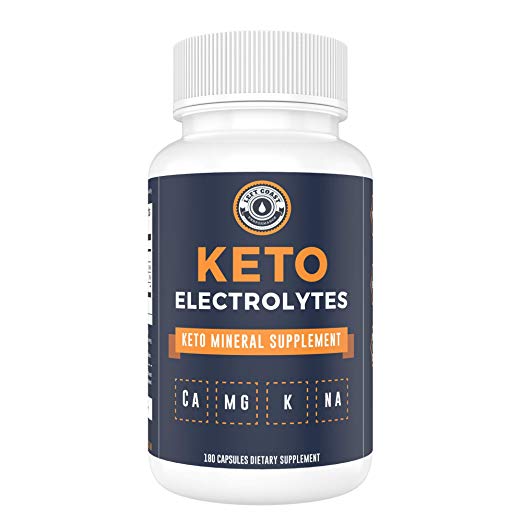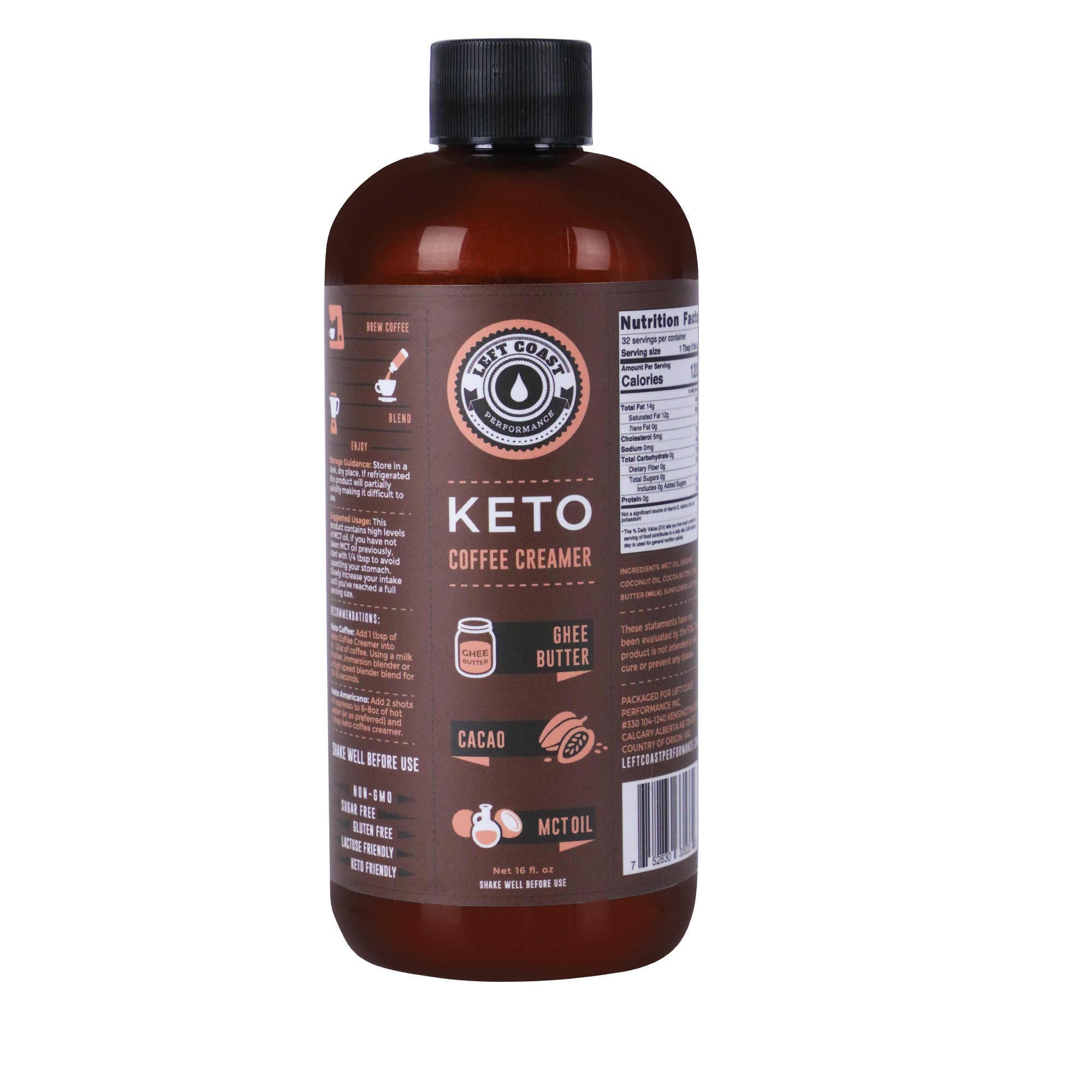What is Clean Keto (Plus a Nutritionist's Clean Keto Shopping List)

on August 01, 2019
While the keto diet has been shown to aid in weight loss and protect against a number of chronic diseases, it’s possible you may not be reaping any of these benefits.
This is because it’s not just about cutting out carbs.
If you’re only focusing on your daily macronutrients (fats, proteins, and carbohydrates), you may be lacking in some vital micronutrients (vitamins, minerals, enzymes, and other plant-based chemicals like phytonutrients). This may be the case if you’re on a solid “dirty” diet of bun-less fast-food bacon burgers, processed cheese slices, and artificially sweetened diet sodas.
How you feel and how your body functions still ultimately comes down to the quality of the food you’re consuming and the amount of nutrients you’re feeding your body.
This is the essence of eating “clean,” which will help you reach optimal health, versus eating “dirty,” an unsustainable diet plan that will eventually hinder weight loss and lead to inflammation, bloating, cravings, and other unwanted side effects.
Below, we’ll discuss what the difference is between a clean and dirty keto diet, why it’s important to eat “clean,” and what should be on your clean keto shopping list.
Clean Keto Versus Dirty Keto
A general keto diet consists of about 60-80% fats, 15-30% protein, and 5-10% carbohydrates. Such strict carb restriction will bring your body into a metabolic state of ketosis, in which you will burn fat instead of glucose (sugar) for fuel.
You can easily reach these keto goals by cutting out breads, pastas, grains, beans, sugar, starchy fruits and vegetables, and replacing them with mostly fats and some protein. After attaining ketosis and breezing through any keto flu symptoms, most people start to notice a drop in weight, a boost in energy, and other health benefits.
But if you’re following your macronutrient and calorie counts to a T and tracking your ketone levels yet still struggling with fatigue, weight loss, and cravings, you’ll want to take a closer look at what exactly you’re feeding your body—because not all keto-friendly foods are equal.
Dirty Keto
Following a “dirty” keto diet allows you to eat anything you desire, as long as you stay within your macronutrient counts to attain and maintain a state of ketosis.
What makes up those macronutrients doesn’t really matter. In fact, you can technically be keto while hitting up your local fast food joint. Just order your double bacon cheeseburger without the bun and opt for a diet soda, and you’ll still easily be within your daily macro count.
A dirty keto plan is easy and convenient and it will get you losing weight—at least at first.
But all those low-quality meats and cheeses, not to mention that diet soda, are likely lacking in fiber, vital vitamins and minerals, while being filled with artificial ingredients, harsh preservatives, antibiotics, hormones, and other questionable additives.
These extras may not contain carbs or calories, but such “dirty” ingredients can potentially reverse any benefits that the keto diet can offer. This will lead to nutrient deficiencies that can halt your weight loss, decrease your energy, affect your mood, and bring on inflammation. There are several reasons why:
-
Too much sodium: In general, processed products and fast food contain a lot of sodium, typically used as a preservative and to add flavor. In excess, sodium can cause dehydration, bloating, and constipation.
While we recommend making sure you have enough electrolytes in your keto diet, the amount of sodium in processed foods is often overwhelming. According to the U.S. Department of Health and Human Services, the majority of sodium consumed in the U.S. comes from salts added to processed foods, not that found naturally in whole foods or added in home cooking.
-
Highly processed vegetable oils: Many processed and fast foods also contain heavily processed vegetable oils like canola, corn, sunflower, soybean, safflower, and cottonseed, all which offer very few beneficial nutrients.
These oils are often high in omega-6 fats, which have been shown to contribute to chronic inflammation. These types of oils are also fragile and can easily be oxidized, possibly adding to oxidative stress in the body.
- Artificial sweeteners: No-calorie sweeteners like sucralose (Splenda) and aspartame are often found in keto-friendly “energy” bars and “sugar-free” drinks and snacks. But these can cause digestive issues and headaches in some people. They can also increase your desire and dependence for sugar.
- Not enough fiber and micronutrients: One of the greatest risks of a dirty keto plan is the lack of fiber and vitamins and minerals obtained, especially if you’re not supplementing those burgers and cheese plates with nutrient-dense vegetables.
Clean Keto
On the flipside, a clean keto diet requires a little extra care and attention, as it centers on eating natural whole foods that are nutrient-dense and fiber-rich. This means avoiding packaged and processed products as much as possible, even if they’re keto-friendly.
The best way to stay clean is to prepare snacks, make your own sauces and dressings, and cook your meals at home so that you have full control of what goes into your food and, ultimately, your body.
When you’re eating clean, quality matters, especially when you’re consuming a lot of animal products. The goal for eating clean comes down to a few important points:
- Consume a variety of whole, unprocessed foods: Keep your diet as diverse as you can by eating a mix of meats, seafood, eggs, nuts and seeds, cheeses, low-starch vegetables, and small amounts of berries.
- Buy grass-fed, pasture-raised, and organic foods whenever possible: When you can, choose organic produce and nuts and seeds, as well as grass-fed beef and dairy, pasture-raised pork, free-range and pastured eggs, and wild-caught seafood products. In general, grass-fed or pasture-raised products have been shown to contain more nutrients, especially antioxidants and vitamins like A, D, and E, versus their grain-fed counterparts.
- Choose full-fat varieties: Pass on anything labeled low-fat, reduced-fat, non-fat, skim, or “light.” These have been processed to strip out any natural fat, and they are far less satisfying and nutritious.
- Eat your vegetables: You’ll also want to complement your clean fats and proteins with low-carb fruits and vegetables that are packed with fiber and essential vitamins and minerals, like avocado, leafy greens, and broccoli. These nutrients help keep cells healthy and your body running efficiently. Fiber in particular helps feed the good bacteria in your gut microbiome, which has been linked to good mental and physical health.
- Stay hydrated: Since ketosis causes an increased amount of water and mineral loss, a clean keto diet includes plenty of water, as well as a consistent replenishing of electrolytes via supplements, sea salts, and broths.
- Supplement with natural sources: Clean keto also allows for pure, natural protein sources like grass-fed bone broth powder, as well as BHB ketone supplements.
Keto-Friendly Foods to Avoid
There are some “dirty” keto favorites we’ve seen circulating around the web, like:
- Diet sodas
- Pork rinds
- Cheez Whiz
- Fast food bunless bacon-double cheeseburgers
- Sugar-free protein "healthy" protein bars using low quality ingredients.
- Store-bought mayonnaise (like Miracle Whip)
It’s safe to say you’ll want to pass on these highly processed items. The easiest rule to follow is to simply avoid packaged and processed foods all together, and skip the fast food restaurant. But that’s not always easy. Instead, get savvy about reading labels and understanding what certain ingredients are to weed out the dirty stuff. When you’re in a pinch and looking for something fast, these are some key foods and ingredients to avoid:
Artificial Sweeteners, Colors, and Additives:
Watch for these words on any ingredient label: sucralose (Splenda), maltodextrin, dextrose, aspartame, saccharin, sorbitol, and acesulfame potassium, as well as colors like “Blue 1” and “Yellow 5.”
You’ll often find these types of ingredients in diet sodas, energy drinks, sugarless snacks and candies, protein bars and shakes, and even in some sauces, dressings, and yogurts. In general, if a product is marketed as “no-sugar,” “sugar-free,” or “sugarless,” be suspect.
Processed Vegetable Oils and Hydrogenated Fats:
Avoid vegetable oils like canola, corn, soybean, safflower, and cottonseed, all which offer very few beneficial nutrients. Also, look for the word “hydrogenated” (found in many vegetable oils and products like margarine). This refers to trans fats, which have been linked to several chronic diseases.
Processed Meats and Cheeses:
Many packaged deli meats include preservatives like sodium nitrite, which has been linked to increased risk of cancer. Processed cheeses are often made with ingredients like vegetable oils, food dyes, and preservatives.
Keto-Friendly Foods to Eat in Moderation
While some keto-friendly foods offer a great amount of protein, fat, and vitamins and minerals, they can also be easy to overdo. These are a few you should eat in moderation:
Nuts and seeds and their butters:
Chia, flax, sesame, and pumpkin seeds, as well as nuts like walnuts, pecans, and almonds are packed with healthy fats, protein, fiber, and micronutrients. Carefully check your serving sizes, though, as it can be easy to overindulge, especially with nut butters. Yes, even our own Keto Nut Butter should not be the staple of your diet.
Dairy:
Full-fat milk, cheeses, creams, and yogurt (plain and unsweetened) are satisfying and provide a good amount of nutrients like calcium, vitamin D, and probiotics. However, dairy can also stimulate insulin secretion and promote inflammation, so it’s best to limit your consumption and be aware of how your body responds to dairy.
Natural, Low-Carb Sweeteners:
While you want to avoid artificial sweeteners, some low-carb natural sweeteners are okay in moderation, including: stevia, monk fruit sweetener, erythritol. That said, too much of these types of sweeteners can cause digestive problems and may leave you craving sweets. Some also may be mixed with other sweeteners, so be sure to check the product label thoroughly.
Keto-Friendly Foods to Eat
The good news is there is still a wide variety of food to enjoy on a clean keto diet, including:
Unprocessed Fats and Oils:
Fulfill your fat counts with avocados, coconut oil, grass-fed butter or ghee, extra virgin olive oil, avocado oil, and MCT oil.
Wild Caught Seafood:
Opt for fatty fish loaded with brain-healthy omega-3s, like salmon, cod, and sardines.
Grass-Fed Meats and Pasture-Raised Pork and Poultry:
Pick from various cuts of steak and ground beef, chicken, turkey, and duck. If you dare, try organ meats for an extra healthy dose of iron and B vitamins.
Free-Range, Pastured Eggs:
Eggs are excellent sources of protein, and pastured versions may contain more vitamin D, E, and omega-3 fats in their yolks than those from grain-fed, caged hens. Yes, be sure to eat the yolks.
Low-Carb Vegetables:
Boost your fiber and antioxidants with leafy greens, onions, peppers, cruciferous vegetables, etc. Also, add in fermented vegetables, like sauerkraut and kim chi, which are packed with probiotics for good gut health.
Water, Coffee, and Herbal Tea:
Stay hydrated with unlimited amounts of water and herbal tea. Enjoy a cup or two of coffee, too, but only without sugar and mixed with a little full-fat milk and maybe a splash of MCT oil.
What to Look For While Shopping
The general rule when entering a grocery store is to stick to the perimeter, where all the fresh foods like fruits, vegetables, seafood, meats, eggs, and dairy are typically located. The guts of the store are where most of the pre-packaged items lurk.
Be wary of marketing buzzwords like: low-carb, no-carb, sugarless, sugar-free, diet, no sugar added, and fortified, and watch for hidden sweeteners and additives in sauces, dressings, condiments, and more.
Also check labels for serving sizes, total fat and protein grams, and fiber content. You can quickly figure out the net carbs in a product by subtracting the fiber amount from total carbs. Aim for around 20-50 grams of net carbs per day to stay in ketosis.
Clean Keto Shopping List
Here’s a clean keto shopping list, including some staple items, to get you started:
FRUITS & VEGETABLES:
- Avocado
- Berries: blackberries, blueberries, cranberries, raspberries, or strawberries
- Celery
- Cherry tomatoes
- Cruciferous vegetables: bok choy, broccoli, brussels sprouts, cabbage, or cauliflower
- Cucumbers
- Garlic
- Green beans
- Leafy greens: collard greens, dandelion greens, kale, spinach, or swiss chard
- Lemons and/or limes
- Lettuces: arugula, romaine
- Mushrooms
- Red bell pepper
- Olives
- Sauerkraut (naturally fermented with no added sugar)
- Zucchini
FATS & OILS:
- Butter or ghee (grass-fed)
- Coconut oil (extra-virgin, cold-pressed)
- Extra-virgin olive oil
- Other cold-pressed oils like avocado, walnut, sesame, or flaxseed
- MCT oil
MEATS & SEAFOOD:
- Beef (grass-fed)
- Chicken legs or breasts (free-range)
- Pork
- Fish: salmon, tuna, or sardines
- Bacon
DAIRY & EGGS:
- Cheese (full-fat,
- Yogurt (whole-milk, plain, unsweetened)
- Eggs (free-range, pastured)
NUTS & SEEDS:
- Chia seeds, flax seeds, pumpkin, or sesame seeds
- Almonds, hazelnuts, peanuts, pecans, or walnuts
- Nut and seed butters (full-fat, unsweetened)
PANTRY STAPLES
- Chicken broth
- Coconut milk (full-fat, unsweetened)
- Fish sauce
- Mustard
- Soy sauce (or coconut aminos)
- Tahini (sesame paste)
- Vinegar (balsamic, cider, red or white wine)
HERBS & SPICES:
- Sea salt
- Black pepper
- Cinnamon
- Ground basil, oregano, thyme, or rosemary
- Turmeric
Clean Keto Recipes
There are plenty of clean keto recipes available online. Here are three we recommend—one each for breakfast, lunch, and dinner:
This easy-to-prepare breakfast is loaded with healthy fats, including:
- 1 ripe organic avocado
- 2 oz wild-caught smoked salmon
- 1 oz fresh goat cheese
- 2 tablespoons of extra virgin olive oil
- 1 juiced lemon, juiced
- 1 pinch of Celtic sea salt
This rich, Asian-inspired dish combines a nice dose of protein with cruciferous veggies and tons of flavor:
- 1 pound ground pork
- 1 head cabbage, thinly sliced
- ½ onion, thinly sliced
- 1 tablespoon sesame oil
- ¼ cup soy sauce or liquid aminos
- 1 clove garlic, minced
- 1 teaspoon ground ginger
- 2 tablespoons chicken broth
- 2 stalks of green onion
This satisfying main dish packs in a ton of veggies, protein, and fats, all with an Italian twist:
- 1 medium spaghetti squash
- 1 medium red onion
- 1 red bell pepper
- 1 yellow bell pepper
- 5 hot or sweet Italian sausage links
- 3 tablespoons extra-virgin olive oil
- 1 teaspoon kosher salt
- 1/4 teaspoon ground black pepper
- 2 tablespoons chopped fresh parsley
Keto Diet Snacks
Here are some quick, easy clean keto snacks to always have on hand as well:
- Smoked salmon
- Hard-boiled eggs
- Hard and high-quality cheeses
- Handful of nuts and/or seeds
- Celery and nut butter or guacamole
- Whole-fat yogurt (add nuts or seeds and a few berries as a topping)
- Avocado with olive oil
- Olives
- Chia seed pudding with coconut milk
In Conclusion: Why Eat a Clean Keto Diet?
While it’s possible to subsist on fast food burgers, “sugarless” snacks, and diet sodas and still be in ketosis, this sort of “dirty” keto diet will end up leaving your body starving for fiber and nutrients that are essential for helping your body run properly. We can sometimes get so stuck on focusing on our macronutrient counts, that we forget one important fact: Just because something is low-carb, doesn’t mean it’s healthy.
Eating clean keto is about consuming a wide range of whole foods, choosing grass-fed and pasture-raised animal products, always picking the full-fat option, eating a colorful array of low-carb and high-fiber vegetables, and staying plenty hydrated. Being more mindful of what makes up your daily macronutrients should help wipe out any lingering fatigue, bloating, cravings, and excess weight.


